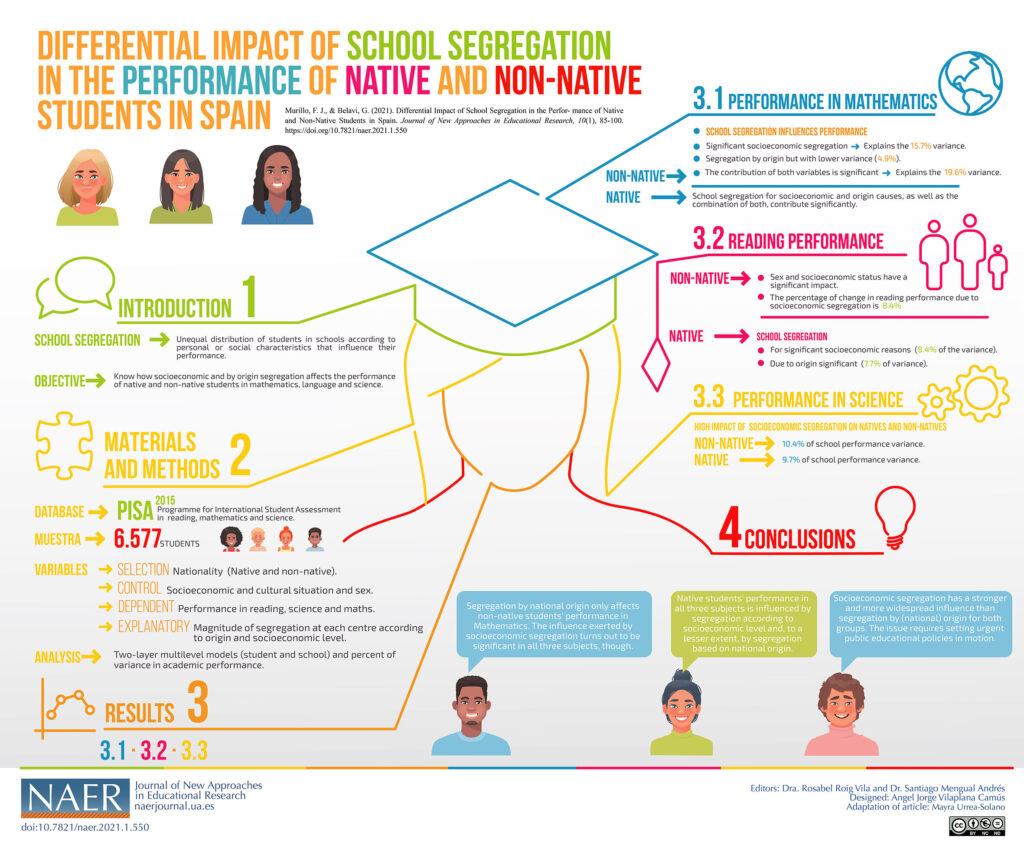F. J. Murillo and G. Belavi analyze the differential impact of school segregation on native and foreign students
The latest article by F. Javier Murillo and Guillermina Belavi is entitled “Differential Impact of School Segregation in the Performance of Native and Non-Native Students in Spain” and has been recently published in the Journal of New Approaches in Educational Research.

There is evidence of the impact of school segregation on students’ academic achievement, but it is debated whether the extent of this impact is dependent on students’ socioeconomic status, or on their native or non-native condition. This research addresses the problem in Spain, seeking to determine how immigrant and socioeconomic segregation affect the academic achievement of native and non-native students. With this aim, the PISA study database was specially exploited by means of two-tier Multilevel Models, estimating school segregation through the Hutchens Square Root Index. Specifically, the study estimates the influence of school segregation on students’ academic achievement in the subjects of Mathematics, Language and Science. The results confirm that school socioeconomical and immigrant segregation affect students’ academic achievement differently. Whereas socioeconomic segregation negatively affects both groups in all three subjects, immigrant segregation affects non-native students more strongly. Thus, data shows school segregation on socioeconomic grounds is always significant, and always has a considerable impact on achievement, regardless of students’ national origin. School segregation reproduces and accentuates conditions of social injustice. To counter its harmful effects, it is necessary to act first and foremost on socioeconomic segregation, as this causes the most devastating effects in education, particularly for non-native students.
Murillo, F. J. y Belavi, G. (2021). Differential impact of school segregation in the performance of native and non-native students in Spain. Journal of New Approaches in Educational Research, 10(1), 85-100. https://doi.org/10.7821/naer.2021.1.559
